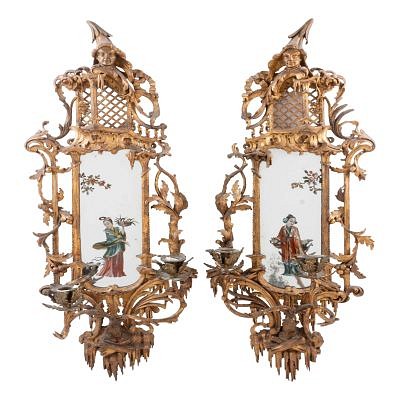After Auguste-Hyacinthe Debay (French, 1804-1865)
Lot 80
About Seller
Hindman
1338 West Lake Street
Chicago, IL 60607
United States
Recognized as the Midwest's leading fine art auctioneers, Hindman Auctioneers has built a worldwide reputation based on a full service approach to the auction business tailored to meet the individual needs of our clients. Coming from a variety of educational backgrounds, specialists bring years of e...Read more
Categories
Estimate:
$5,000 - $7,000
Absentee vs Live bid
Two ways to bid:
- Leave a max absentee bid and the platform will bid on your behalf up to your maximum bid during the live auction.
- Bid live during the auction and your bids will be submitted real-time to the auctioneer.
Bid Increments
| Price | Bid Increment |
|---|---|
| $0 | $25 |
| $500 | $50 |
| $1,000 | $100 |
| $2,000 | $250 |
| $5,000 | $500 |
| $10,000 | $1,000 |
| $20,000 | $2,500 |
| $50,000 | $5,000 |
| $100,000 | $10,000 |
About Auction
By Hindman
Oct 13, 2020
Set Reminder
2020-10-13 10:00:00
2020-10-13 10:00:00
America/New_York
Bidsquare
Bidsquare : Fine Furniture, Decorative Arts and Silver
https://www.bidsquare.com/auctions/hindman-auctions/fine-furniture-decorative-arts-and-silver-5678
Hindman Bidsquare@hindmanauctions.com
Hindman Bidsquare@hindmanauctions.com
- Lot Description
After Auguste-Hyacinthe Debay (French, 1804-1865)
Le berceau primitif: Eve et ses deux enfants, 1846
bronze
inscribed A. Debay and dated, with F. Barbedienne Fondeur foundry mark and Reduction Mecanique A. Collas seal
Height 23 x width 7 1/8 x depth 8 3/4 inches.
Literature:
Lami, Stanislas. Dictionnaire des sculpteurs de l'ecole francaise au dix-neuvieme siecle. Paris, 1916, pp. 132-134
"The Great Exhibition and its Results," vol. XIX, The Illustrated London News, October 11, 1851, p. 465, no. 523
Catalogue Note:
Auguste-Hyacinthe Debay was primarily recognized as a painter during his lifetime, with less than twenty documented sculptures in his body of work. His relatively meager output of sculpture was met with great acclaim, however, with the fountains in the Place de la Concorde and the facade of the Ecole des Beaux-Arts in Paris among his illustrious commissions. Le Berceau primitif made its debut at the Paris Salon of 1845, and depicted Eve cradling her infant sons Cain and Abel. This idealized and intimate moment of maternal affection and domestic tranquility captured in carved marble stood in poignant contrast to the ultimately violent and tragic fate of the two brothers. This contradiction was explicitly rendered in bas-relief along the base of the sculpture, an ominous portent of patricide and original sin. Following its debut at the Salon of 1845, the sculpture was further exhibited at the Great Exhibition of 1851 in London and the Exposition Universelle of 1855 in Paris. href="https://hindmanauctions.com/gavelizer/receipts/296410/2#_ftn1">[1] The Illustrated London News covered the Great Exhibition of 1851, and its review of Debay's "Eve" as they designated it, is worth rehearsing in full: "We have already, in our concluding article on sculpture, favourably noticed the very masterly group of Eve, with the infant Cain and Abel in her lap, exhibited in the Gobelins room, by M. Debay. The idea is poetical and picturesque, and is ably carried out. The First Mother appears to be lost in a revery as to the future destinies of her offspring, the principal incidents of which are foreshadowed to the spectator in the bas-relief sculptures on the pedestal. All things considered, we should be inclined to pronounce this to be one of the finest works of sculpture in the Exhibition. Some people have given it the fanciful title of the "First Cradle" but as that does not do justice to the poetic mystery involved in the conception, we prefer the simpler title by which we have denoted it." According to Stanislas Lami, the French sculptor and art historian, the sculpture was ultimately purchased by Anatoly Nikolaievich Demidov, First Prince of Donato, and was sold at auction, along with the rest of the Demidov collection, in Florence at the Villa San Donato, the family palace, in 1870 for 13,500 francs. The present whereabouts of the original sculpture are unknown.
"Auguste-Hyacinthe Debay (French, 1804-1865)." Dahesh Museum of Art.
http://www.daheshmuseum.org/portfolio/auguste-hyacinthe-debaythe-first-cradle-eve-and-her-two-children/#.XzWbz-hKjIV
"The Great Exhibition and its Results" vol. XIX, The Illustrated London News, October 11, 1851, p. 465, no. 523
Lami, Stanislas. Dictionnaire des sculpteurs de l'ecole francaise au dix-neuvieme siecle. Paris, 1916, p. 133
Condition
For condition inquiries please contact fdcr@hindmanauctions.com - Shipping Info
-
Please refer to https://hindmanauctions.com/shipping-packing
-
- Buyer's Premium



 EUR
EUR CAD
CAD AUD
AUD GBP
GBP MXN
MXN HKD
HKD CNY
CNY MYR
MYR SEK
SEK SGD
SGD CHF
CHF THB
THB





















